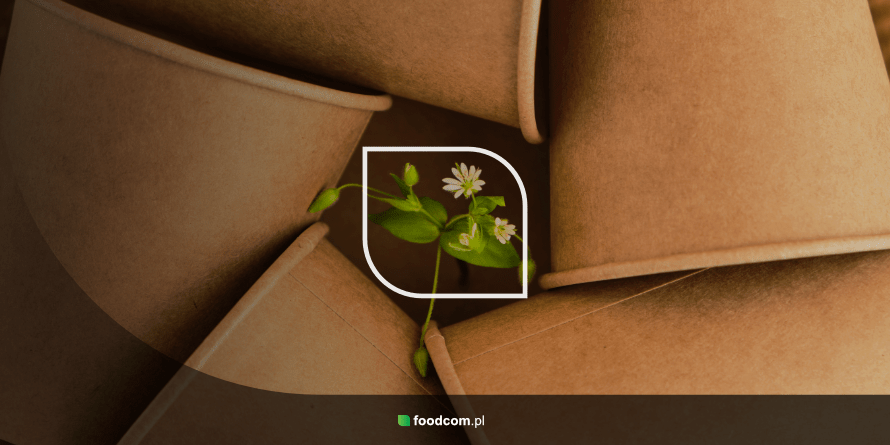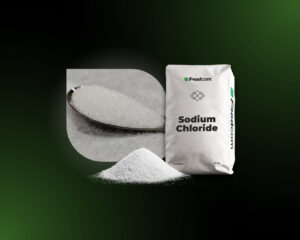- Plastics are key materials for industry, popular due to their high strength, flexibility of use, and attractive price.
- Advances in processing technology and material innovations allow plastics to be adapted to the needs of the food, chemical, and packaging industries.
- Environmental challenges and the growing emphasis on the circular economy are accelerating the development of sustainable plastics and recycling technologies.
Plastics are the backbone of modern industry: from packaging and white goods to automotive components, medical devices and food components. Their importance is constantly growing thanks to a combination of low production costs, high performance and a huge spectrum of properties. Find out how plastics are made and how they can be used in various industrial applications.
What are plastics?
Plastics are polymeric materials obtained by chemical synthesis. They are based on polymers, i.e. macromolecular compounds made up of repeating units – monomers. These are synthetic compounds or modified natural polymers. Plastics may also contain additives such as UV stabilisers or dyes. In terms of properties, these materials can be flexible, hard, temperature-resistant or easy to mould.
The main raw materials for plastics are:
- petroleum (the most important source of ethylene, propylene and other monomers),
- natural gas,
- biomass (for bioplastics),
- recycled secondary raw materials.
Plastics production process
Plastic production is a multi-stage petrochemical process. It results in plastic pellets that can be further processed. Let us discuss each stage of the process in turn.
Crude oil distillation
Production begins with the distillation of crude oil. This process takes place in a refinery furnace and results in crude oil fractions with different boiling points and weights. As a result of heating, each fraction evaporates and then condenses at the appropriate temperature range, allowing them to be separated.
Separation of the heavy paraffin fraction
One of the most valuable fractions for the polymer industry is heavy paraffin. Naphtha goes to further processing, where suitable components are separated to produce monomers – mainly unsaturated hydrocarbons such as ethylene and propylene.
Cracking
Cracking (thermal or catalytic) is used to break down heavier fractions into lighter compounds – monomers. It is from these that the most common polymers are formed: polyethylene (PE), polypropylene (PP), polyvinyl chloride (PVC), polystyrene (PS), polyester (PET) and many others.
Polymerisation – condensation or addition
The next step is the joining of monomers into long polymer chains. This process, called polymerisation, takes place in reactors under strictly controlled temperature and pressure and in the presence of a catalyst specific to the material. Depending on the type of monomer, either addition or condensation polymerisation is used.
Additives and granulation
Any modifying additives, such as stabilisers, plasticisers or dyes, which alter the properties of the polymer are then added to the polymer. The polymer is then granulated and the resulting granulate is sent to plastics processing plants.
The process of creating bioplastics, on the other hand, may use fermentation processes, and plastic production using recycled plastic waste requires prior processing into regranulate.
Plastics processing methods
The variety of applications for plastics requires a number of techniques for granulate forming. Plastics processing mainly includes the methods listed below.
Injection
This is the most commonly used technology, which involves forcing a molten polymer into a mould under high pressure. Once cooled, the polymer takes the shape of the mould. This technique is used in the production of packaging, as well as components with complex forms (electronic parts, equipment housings).
Extrusion
Otherwise known as extrusion; this is a continuous process in which the polymer is pushed through a nozzle with a suitable cross-section. As a result, long components such as profiles, films, tubes, fibres or granulates can be produced with a constant cross-section.
Thermoforming
This involves heating a sheet of plastic to a specific temperature and deforming it in a mould to obtain the desired shape. The process is fast, relatively inexpensive and allows products with thin walls to be created. It is primarily used to produce packaging (cups, trays, containers, blisters) and large-size components (e.g. light vehicle bodies, dashboards, fridge liners or plastic pallets).
Types of plastics and their applications in various industries
On the basis of their properties, we can divide plastics into, among others:
- thermoplastics – they soften and melt when exposed to heat and are recyclable (e.g. PE, PP, PVC);
- thermosetting plastics – are infusible and insoluble (e.g. resins);
- elastomers – exhibit very high deformability at room temperature and can be shaped as desired;
- plastomers – exhibit low deformation.
Plastics are characterised by a wide range of properties, so they can be used for a variety of applications in quite different industries.
Food industry
Plastics for the food industry are distinguished by their high purity, stability, chemical resistance and compliance with regulations governing contact with foodstuffs. The most popular are:
- PET – it is used to make bottles and containers,
- PE and PP (polyethylene and polypropylene) – used for films, caps and packaging,
- PA – used to make barrier films,
- PS – used to make disposable cups and food trays.
Packaging industry
The packaging industry is the largest consumer of plastics in the world. Materials with different mechanical, barrier and visual properties are used here and produced from:
- LDPE – films and bags,
- HDPE – canisters, bottles,
- PP – food and cosmetics containers,
- PET – transparent bottles, trays.
Chemical industry
Resistance to corrosion and chemical substances is important in this industry. The resulting products are used in the construction or automotive industries, among others. Plastics such as:
- PVC – piping systems, tanks,
- PP – components for pumps and chemical fittings,
- PTFE – seals, non-absorbent coatings.
If you are interested in the above-mentioned industries, check out the offer of Foodcom, where plastics and raw materials for their production are traded.
Trends and innovations in plastics production
Key market trends, innovations in plastics and modern technologies in plastics processing include:
- biopolymers and bioplastics – an alternative to classic petroleum-based plastics;
- polymer modifications to improve resistance, flexibility and barrier properties;
- chemical recycling of plastics to recover monomers of full value;
- sustainable plastics.
Ecology and waste: challenges and solutions for sustainable development
The growing problem of plastic waste is forcing changes in the plastics sector. Above all, it is necessary to develop recycling and the use of renewable and biodegradable raw materials. The answer could be:
- regranulates made from reprocessed materials,
- biodegradable plastics,
- designing packaging for recycling,
- reduction of material mass,
- development of chemical recycling,
- polymer sorting and identification technologies,
- production of long-life products.
The role of plastics in the supply chain and opportunities for collaboration with Foodcom
B2B plastics are the backbone of manufacturing facilities belonging to many industries. Access to a stable supply of monomers, polymers and additives is crucial for the food, chemical, packaging, construction or automotive industries.
As an experienced supplier of plastic raw materials, Foodcom offers a wide range of products in the industrial chemicals and polymers category, covering both basic plastics and specialised raw materials. Cooperation with the company allows access to proven raw materials, support in the selection of materials and, above all, stability of supply in a dynamically changing market situation.










